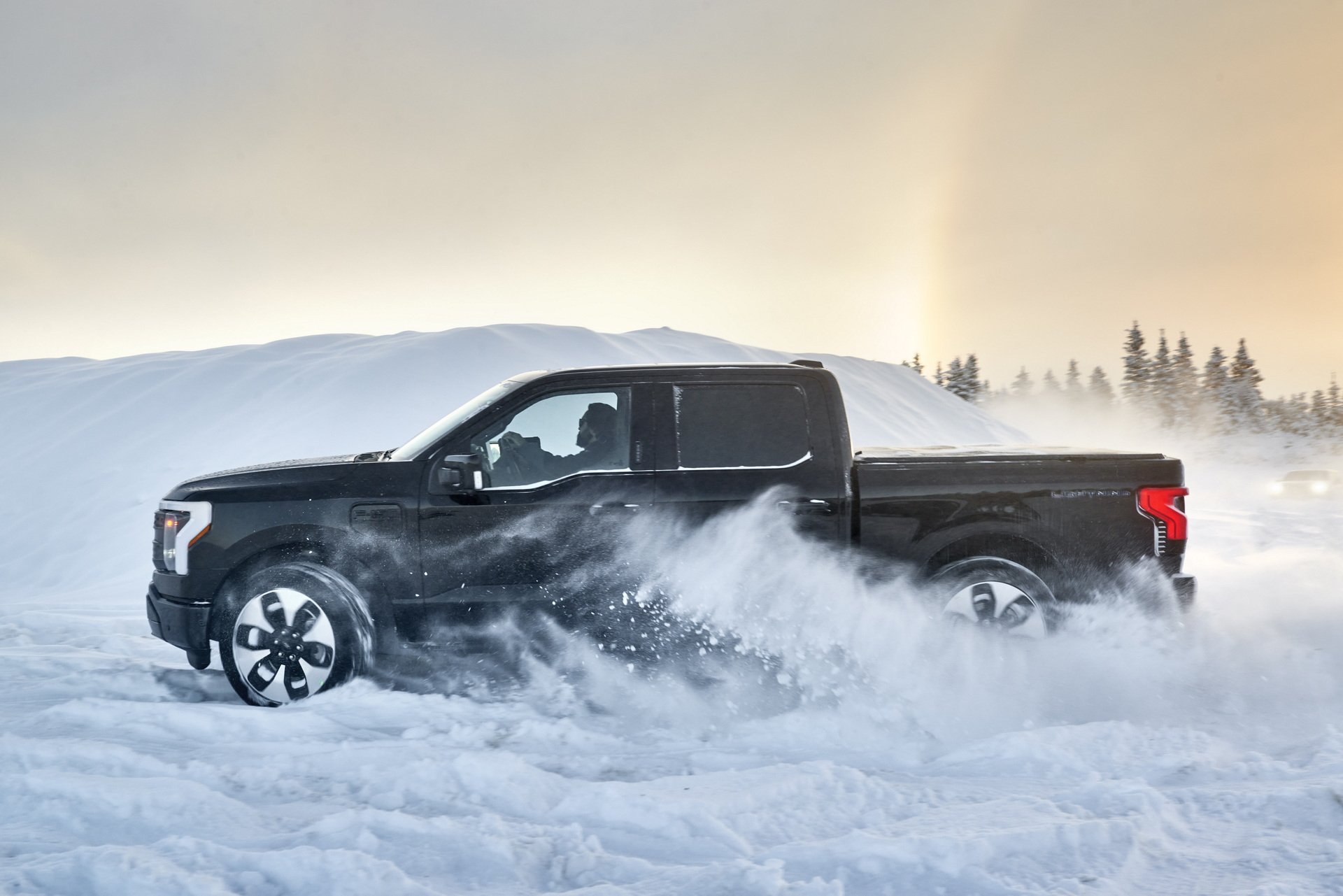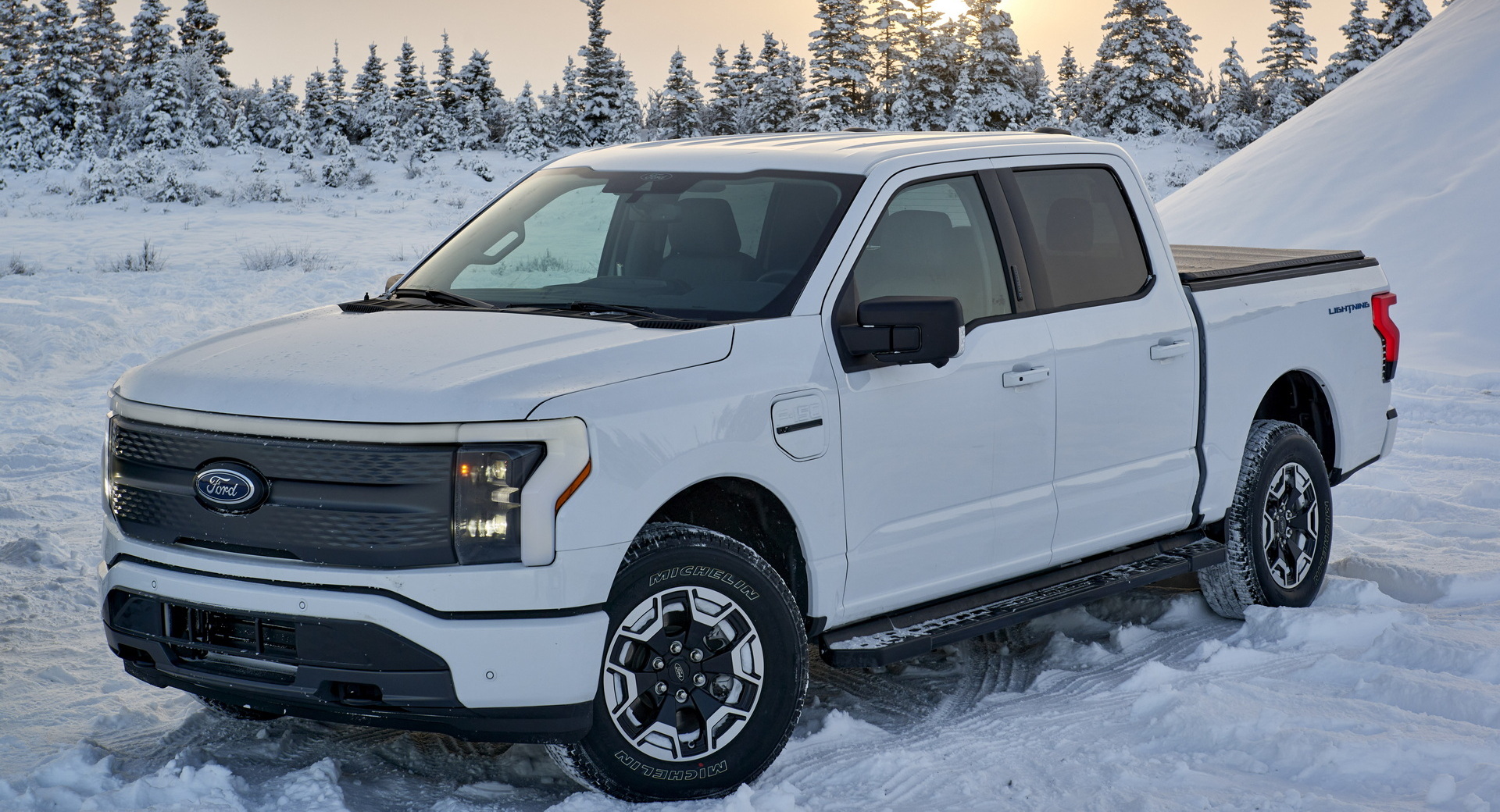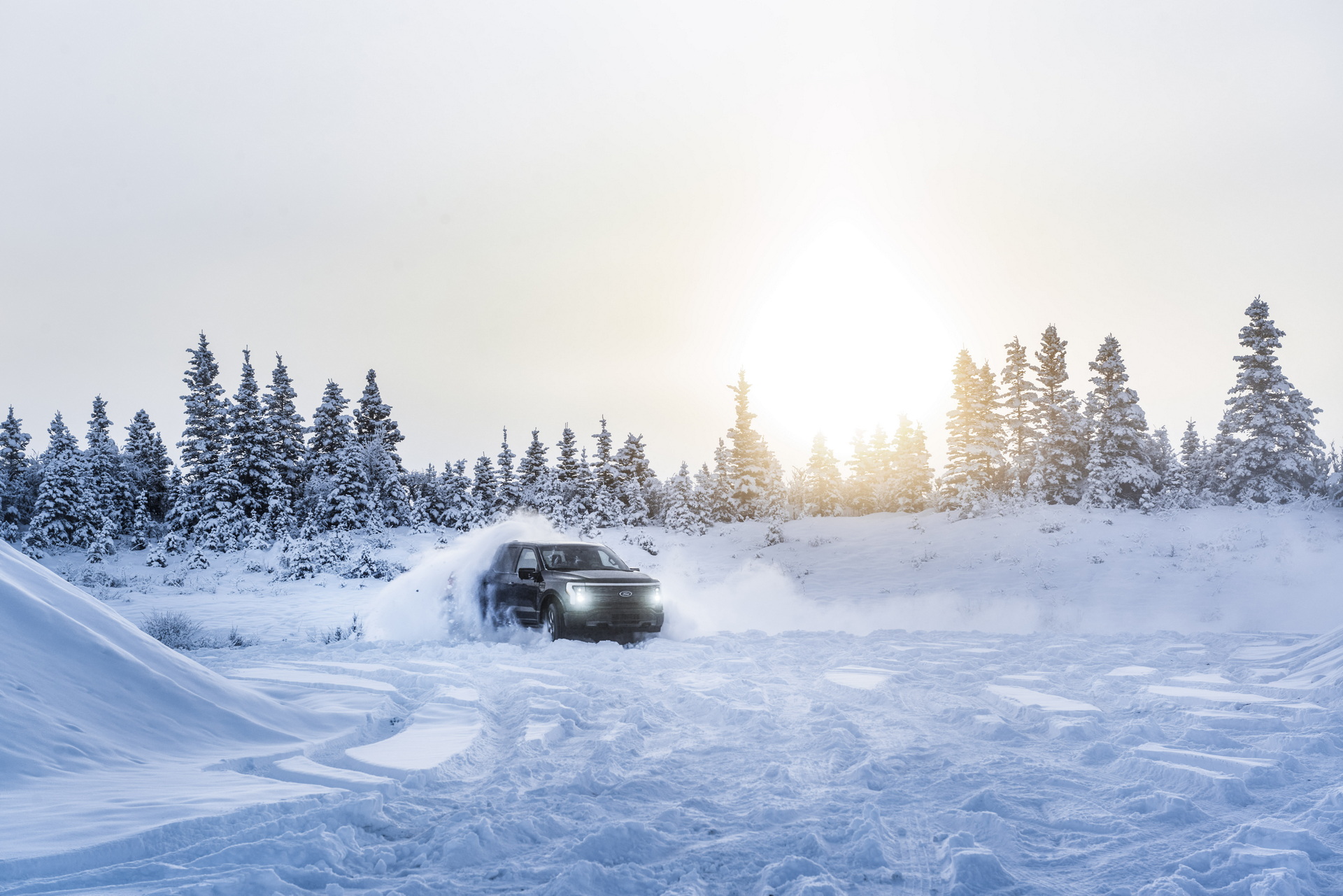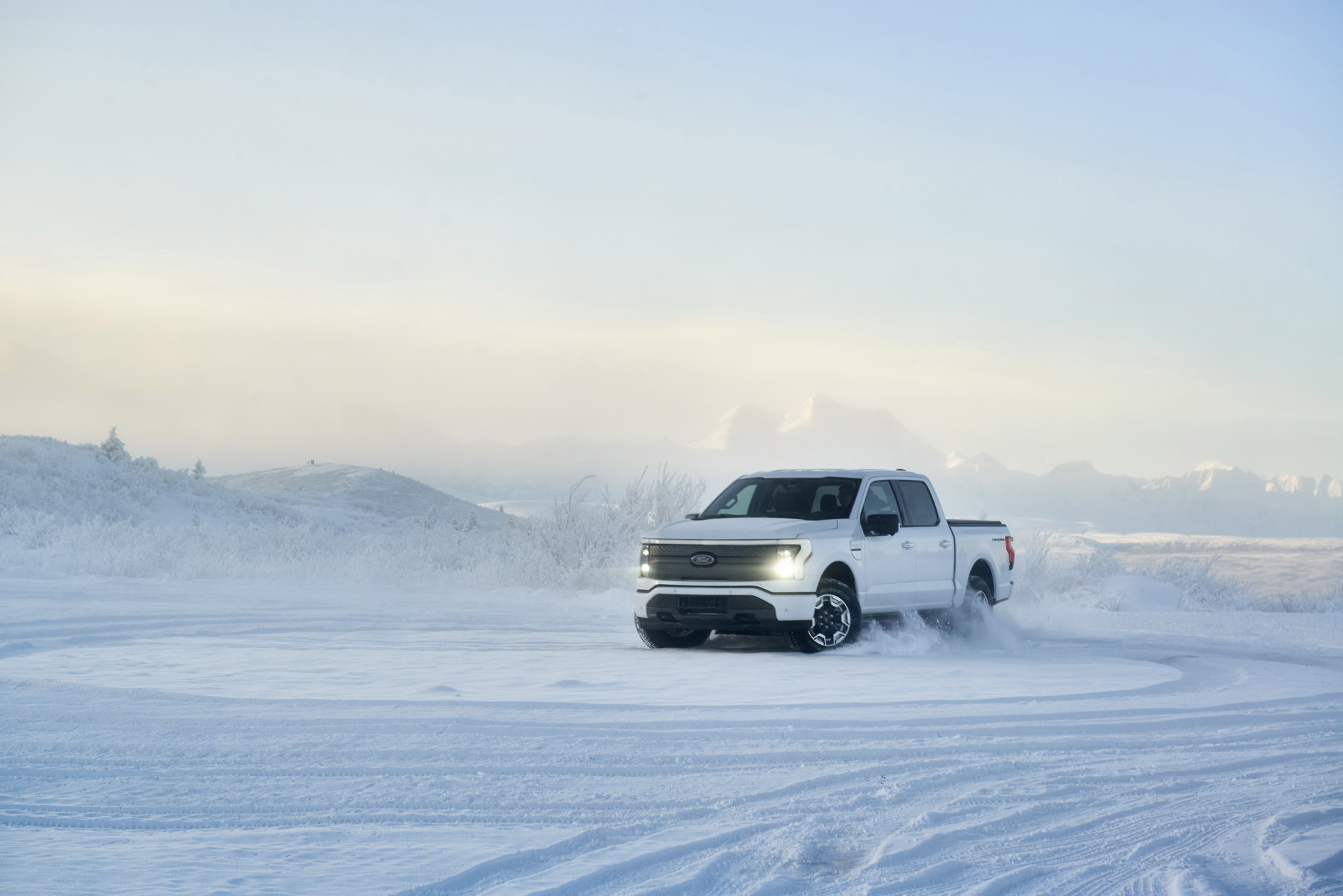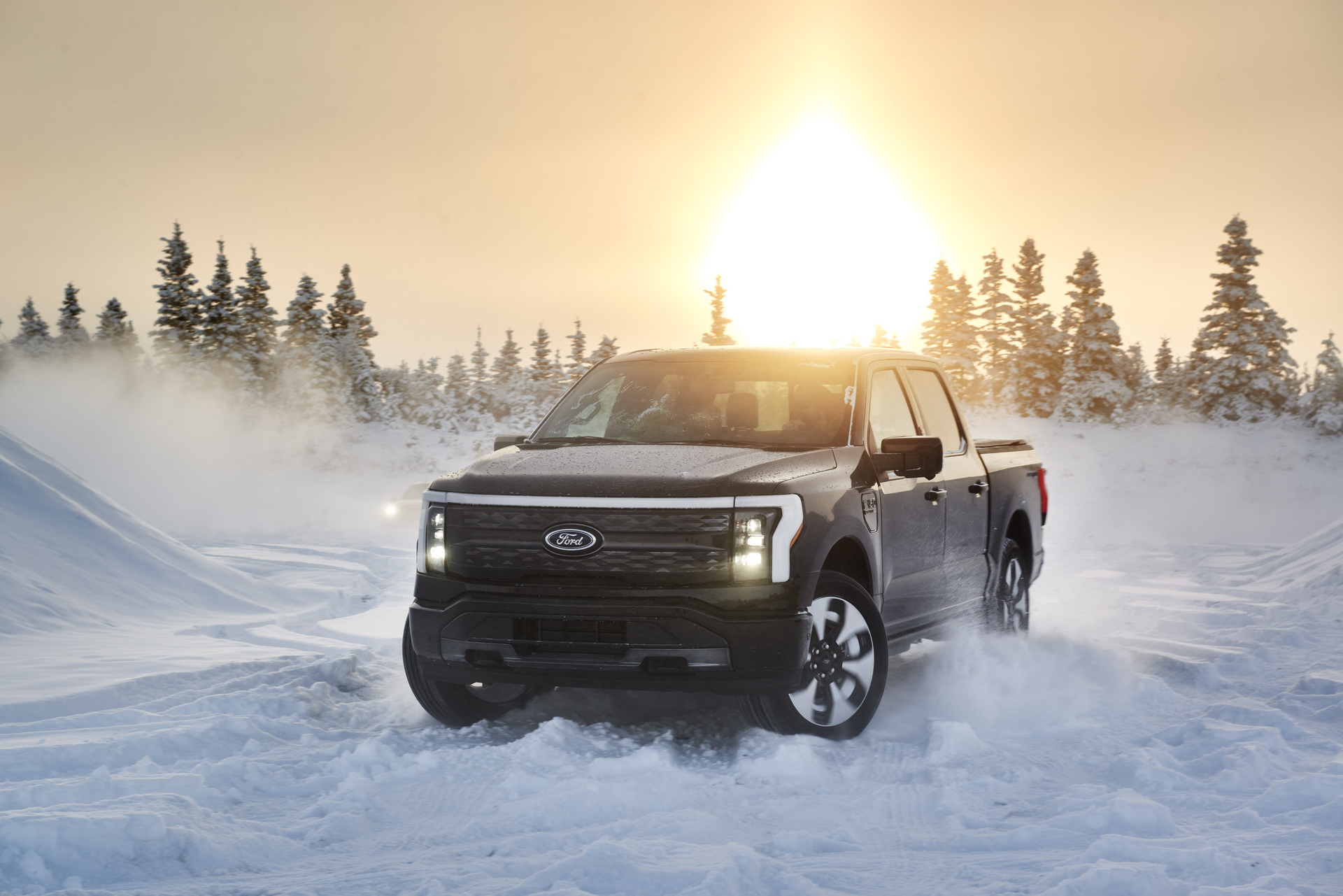For many Americans, winter arrived suddenly and aggressively this year, reminding us that we have yet another season of frigid temperatures and slippery roads ahead of us. For more Americans than ever, though, winter adds another layer of complexity, as they prepare for their first winter in an electric vehicle.
That will certainly be the case for the owners of the Ford F-150 Lightning, which only started being delivered to customers this year, as well as for the roughly five percent of new cars buyers who now own an electric vehicle.
While it’s worth mentioning that the range of internal combustion engines is also reduced in colder weather, that seems to be less of a concern for those drivers. For EV owners, Ford offers eight tips to maximize EV range when the mercury starts to drop.
Read: Ford F-150 Lightning Tackles Icy Alaska Ahead Of Its Launch
First, it is helpful to park an EV in a garage whenever possible, as the space offers at least some protection from the cold, and may provide access to a charging plug. That, incidentally, is the automaker’s second tip: keep your vehicle plugged in when parked to ensure that you have as much range as possible when you take off.
For its third tip, it recommends preconditioning the battery of the F-150 Lightning before a longer commute, since a warm battery is more efficient. If you’re really worried about range, you might not want to be as warm as your battery, though, as Ford recommends using the heater as little as possible while charging to ensure you aren’t drawing down the battery before you even take off.
For those who can’t park their vehicle in a garage, it may get snowed on. If that happens, it’s important to brush all the snow off, because snow is heavy, and you don’t want to be wasting power hauling it around. That’s also a good practice no matter what you drive, since snow and ice can fly off on the highway and become a hazard for following vehicles.
While driving, you can also help improve efficiency by using the seat and steering heaters and relying less on the HVAC system. The heated surfaces use less electricity to warm vehicle occupants than the traditional heater. Ford also recommends keeping your tires properly inflated to improve efficiency, and, finally, driving at moderate speeds, since the faster you go, the more energy is required of the vehicle.
While freezing temperatures have been known to reduce the range of some EVs by as much as 50 percent, drivers can minimize the impact the cold has on their vehicle by planning ahead.





